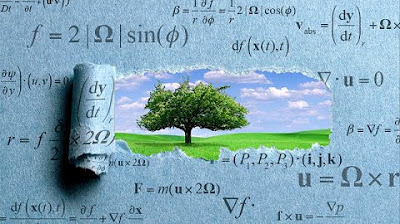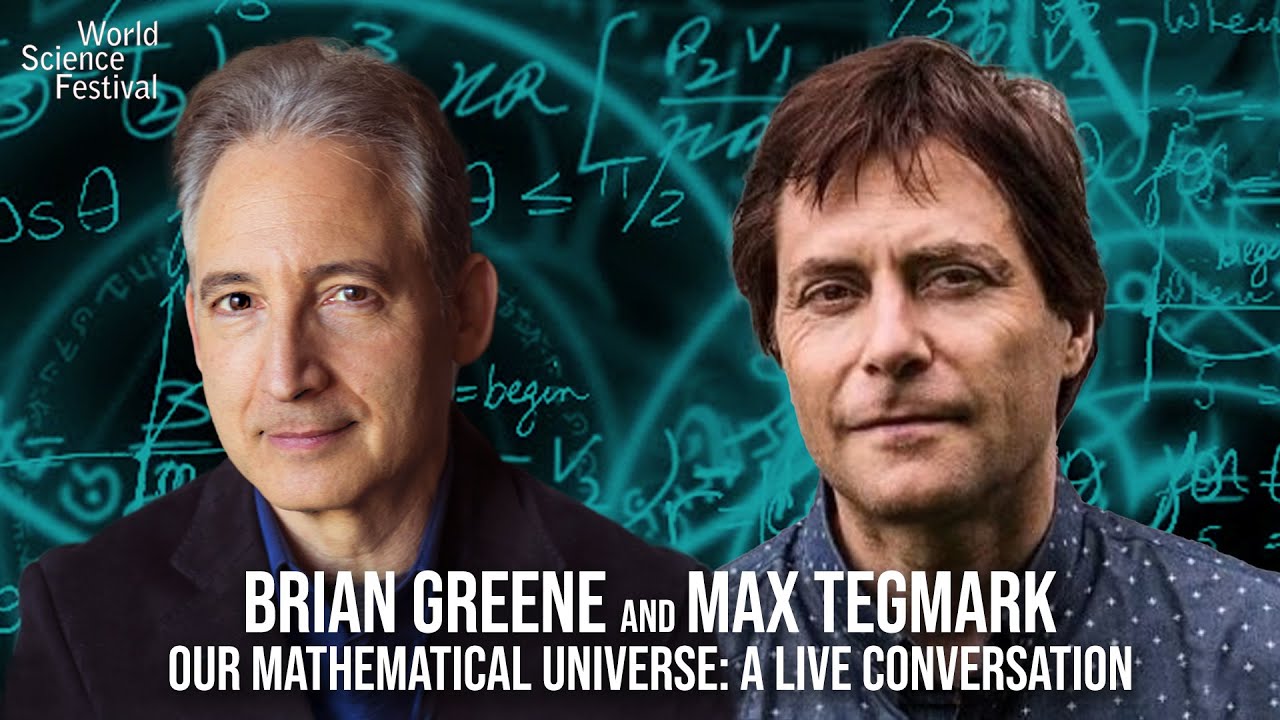Roger Penrose - Is Mathematics Invented or Discovered?
TLDRThe script delves into the profound relationship between mathematics and physical reality, highlighting the precision with which math describes the world at both microscopic and macroscopic levels. It discusses the abstract nature of mathematical concepts like the Dirac equation and Einstein's theory of relativity, which have been remarkably accurate in predicting physical phenomena. The dialogue also explores the philosophical question of whether mathematics is a human invention or a discovery of pre-existing structures, suggesting that its intricate and precise nature indicates a reality that exists independently of our physical world.
Takeaways
- 🧠 Mathematics has an incredible capacity to describe reality with extraordinary precision, leading us to the fundamental structures of the physical world like atoms and subatomic particles.
- 🔍 The abstract nature of mathematics allows it to describe tangible reality, such as the composition of everyday objects down to the atomic and subatomic levels.
- 📚 The Dirac equation, which describes the behavior of electrons and quarks, exemplifies the precision of mathematical descriptions in physics, with accuracy comparable to measuring the distance between New York and Los Angeles to the thickness of a human hair.
- 🪐 Einstein's theory of general relativity demonstrates the precision of mathematics in describing large-scale phenomena like the motion of neutron stars, with an accuracy of one part in 10 to the 14th power.
- 🤔 The precision of mathematical theories often exceeds the precision of the observations available at the time of their discovery, suggesting that mathematics is not merely a human invention but a discovery of pre-existing structures.
- 📉 The historical development of mathematics, from the ancient Greeks to the modern era, shows a progression from geometry to more abstract concepts, all of which have relevance to the physical world.
- 🌐 Mathematics is often viewed as a Platonic reality, existing independently of the physical world, with its own internal logic and structure that is somehow reflected in the universe.
- 🤷♂️ There is ongoing debate about whether mathematics is invented by humans or discovered as an inherent part of the universe, with the latter view supported by the uncanny precision of mathematical theories in predicting physical phenomena.
- 🌌 The vastness of mathematical concepts, many of which do not have clear applications to the physical world, raises questions about the nature of mathematical reality and its potential future relevance.
- 🌐 The Mandelbrot set is an example of the complexity and detail that can arise from simple mathematical ideas, suggesting a richness to mathematical reality that may yet find physical counterparts.
- 🌟 Mathematics has a dual nature: it can be appreciated for its own beauty and intellectual pursuit, while also providing profound insights into the workings of the physical universe.
Q & A
How accurately does mathematics describe the physical world?
-Mathematics describes the physical world with extraordinary precision. For instance, the Dirac equation, which describes the electron, is so accurate that it can describe the magnetic moment of an electron with an accuracy comparable to the distance between New York and Los Angeles to the thickness of a human hair.
What is the significance of the Dirac equation in understanding the physical reality?
-The Dirac equation is significant as it is a fundamental equation in quantum mechanics that describes the behavior of fermions, such as electrons. Its precision in predicting the magnetic moment of the electron exemplifies how mathematics can accurately reflect the microstructure of atoms.
How does mathematics describe the behavior of gravity according to Einstein's theory?
-Einstein's theory of general relativity uses the mathematics of curved spacetime to describe gravity. It is known for its precision, with measurements of the orbits of neutron stars, including a pulsar, agreeing with the theory to an accuracy of one part in 10 to the power of 14.
What is the difference between Newton's and Einstein's theories in terms of precision?
-Newton's theory of gravity had a precision of about one part in 10 to the 7, which was very accurate for its time. However, discrepancies were found, especially in the behavior of Mercury. Einstein's theory improved upon this with a precision of about 10 to the power of 14, which is significantly more precise.
Why is the precision of mathematical descriptions in physics considered 'extraordinary'?
-The precision is considered extraordinary because it often exceeds the accuracy of the observations available at the time the theories were developed. This suggests that mathematical theories can predict outcomes with a high degree of accuracy that was not initially observable.
What is the philosophical debate regarding whether mathematics is invented or discovered?
-The debate centers on whether mathematics is a human construct, invented to help us understand and organize the world, or if it is a discovery of a pre-existing structure, a Platonic reality, that exists independently of our understanding.
What is the 'Platonic reality' or 'mathematical reality' referred to in the script?
-The 'Platonic reality' or 'mathematical reality' is a philosophical concept suggesting that mathematical structures and truths exist independently of the physical world and human perception, much like the ideas proposed by the philosopher Plato.
How does the script suggest the relationship between mathematical theories and the physical world?
-The script suggests that mathematical theories are not just tools for understanding the physical world but are deeply intertwined with it. The precision of these theories in predicting physical phenomena implies that they are revealing inherent properties of the universe.
What is the significance of the Mandelbrot set mentioned in the script?
-The Mandelbrot set is mentioned as an example of the complexity and detail that can arise from simple mathematical ideas. It demonstrates the richness of mathematical structures, even those that may not have an immediately apparent connection to the physical world.
How does the script address the vastness of mathematics in relation to the physical world?
-The script acknowledges that while a significant portion of mathematics has clear applications to the physical world, there is also a vast amount of mathematics that may not have any known relation to it. This raises questions about the nature and existence of mathematical structures independent of physical reality.
What are the two aspects of mathematics highlighted in the script?
-The script highlights the intrinsic beauty and intellectual pursuit of mathematics, as well as its profound connection to and predictive power over the physical world, suggesting a dual nature of mathematics as both an abstract discipline and a descriptive tool for reality.
Outlines
📚 The Precision of Mathematical Descriptions in Reality
This paragraph delves into the remarkable precision with which mathematics describes the physical world. It starts with the fundamental question of how abstract mathematical concepts can accurately depict reality, from the structure of everyday objects down to the atomic and subatomic level. The discussion highlights the Dirac equation's role in describing electrons and quarks, and the precision of these mathematical models is underscored by comparing it to the accuracy of mapping the distance between New York and Los Angeles to the width of a human hair. The paragraph also touches on the precision of Einstein's theory of gravity and its validation through observations of neutron stars, emphasizing the extraordinary accuracy of mathematical descriptions in both macroscopic and microscopic realms.
🔍 The Nature of Mathematics and its Platonic Reality
The second paragraph explores the nature of mathematics itself, considering whether it is an invention of human thought or a discovery of pre-existing structures. It discusses the historical development of mathematical ideas, from the ancient Greeks to the modern understanding that mathematical laws underpin physical reality. The paragraph introduces the concept of a 'Platonic world' where mathematical truths exist independently of human cognition. It raises philosophical questions about the reality of mathematical structures, such as the infinity of prime numbers, and argues that these truths have always existed, even before they were proven or discovered by humans. The discussion suggests that mathematics is not merely a tool for understanding the world but is intrinsically linked to the fabric of reality.
🌌 The Infinite Realm of Mathematics and its Physical Relevance
The final paragraph contemplates the vastness of mathematics and its relationship to the physical world. It acknowledges that while some mathematical concepts have clear applications in physics, many others seem to exist without any known physical counterpart. The speaker uses the Mandelbrot set as an example of the complexity and beauty inherent in mathematical structures, which can be described by simple equations but reveal endless detail upon examination. The paragraph concludes by recognizing two aspects of mathematics: its intrinsic beauty and the pursuit of understanding it for its own sake, and its uncanny ability to mirror and predict the behavior of the physical world with extraordinary precision.
Mindmap
Keywords
💡Mathematics
💡Physical World
💡Dirac Equation
💡Magnetic Moment
💡Einstein's Theory
💡Neutron Stars
💡Platonic World
💡Prime Numbers
💡Euclidean Geometry
💡Mandelbrot Set
💡Discovery vs. Invention
Highlights
Mathematics has an incredible capacity to describe reality with high precision.
The fundamental nature of physical objects can be described by mathematical structures, such as the Dirac equation for electrons.
The precision of mathematical descriptions in physics is exemplified by the magnetic moment of the electron, which is accurate to the thickness of a human hair.
Einstein's theory of gravity has a precision of one part in 10 to the 14, demonstrated by the behavior of neutron stars.
The mathematical description of reality is always leading us to equations that are fundamentally accurate.
Mathematics as a field of study was developed by the ancient Greeks, with geometry being a significant part of their contributions.
The study of mathematics has its own life and is often viewed as having a reality independent of the physical world.
The concept of a 'platonic world' or 'mathematical reality' is a different kind of reality from the physical world.
Mathematical facts, such as the infinity of prime numbers, are considered to be true independently of human understanding.
The debate between whether mathematics is invented or discovered is highlighted by the precision and pre-existence of mathematical laws in the physical world.
Theories like Newton's and Einstein's were developed with a precision that exceeded the observations available at the time, suggesting a discovery of pre-existing mathematical truths.
The extraordinary precision of mathematical theories in physics suggests that mathematics is not just a human construct but an inherent part of the universe.
There is a vast amount of mathematics that may not have a clear relation to the physical world, indicating a potential Platonic realm of mathematical ideas.
The Mandelbrot set exemplifies the complexity and detail that can arise from simple mathematical ideas, suggesting a rich Platonic world of mathematics.
Mathematics has a dual nature: as an independent field of study and as a precise descriptor of the physical world.
The relationship between mathematics and the physical world is characterized by an extraordinary mirroring of behavior when mathematical theories are accurate.
Transcripts
Browse More Related Video
5.0 / 5 (0 votes)
Thanks for rating:





